Video by SPC Kyle Chacon
1st Special Forces Command (Airborne)
Video by SPC Kyle Chacon
1st Special Forces Command (Airborne)
ARLINGTON, Va. (AFNS) —
The Department of the Air Force has selected Davis-Monthan Air Force Base, Arizona, as the new location for the 492nd Special Operations Wing.
Originally announced in August 2023, the plan to establish the 492nd SOW at Davis-Monthan AFB has been refined to prioritize mission effectiveness, cost efficiency and alignment with Air Force and Department of War priorities.
Following the required environmental analysis, these previously announced units will relocate to Davis-Monthan AFB:
• Headquarters, 492nd Special Operations Wing at Hurlburt Field, Florida
• 492nd Special Operations Theater Air Operations Squadron at Duke Field, Fla.
• 319th Special Operations Squadron at Hurlburt Field, Fla.
• Air Combat Command Intelligence Squadron, new activation
Additionally, as part of a refined plan, Davis-Monthan AFB is identified as the preferred location for the following units as part of the 492nd SOW:
• 34th Special Operations Squadron at Hurlburt Field, Fla.
• 20th Special Operations Squadron and 20th Special Operations Aircraft Maintenance Squadron at Cannon Air Force Base, New Mexico
The Air Force will begin the required environmental analysis on proposed changes beginning fall 2025.
Secretary of the Air Force Public Affairs
HURLBURT FIELD, Fla. – Air Force Special Operations Command activated the 31st Air Task Force July 15 and marked the milestone with a stand-up and assumption of command ceremony Sept. 12 at Hurlburt Field.
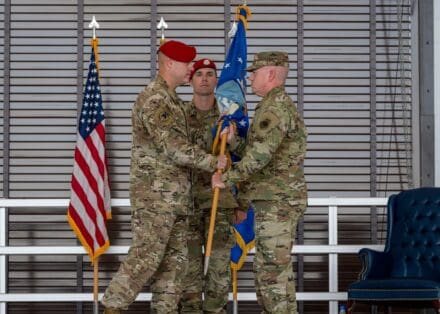
The ceremony presided over by U.S. Air Force Maj. Gen. Michael Martin, AFSOC deputy commander, marked the official activation of AFSOC’s second ATF. U.S. Air Force Col. Brad M. Dvorak assumed command, and Chief Master Sgt. Matthew Greiner will serve as the command chief.
“We are activating the next Air Force unit of action,” said Martin. “This unit is deliberately integrated, self-sufficient, and ready to bring airpower anywhere in the world.”
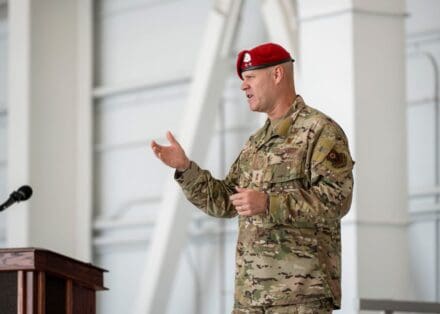
ATFs are limited-scale, experimental units designed to provide combat capabilities to the Joint Force. As the Air Force transitions away from the Expeditionary Air Base model, ATFs serve as a step toward the Air Force’s long-term design for building fully ready, taskable units prepared to compete and win.
“We have been what the nation needed us to be for the last 20 years,” said Martin. “This is the next chapter in how the Air Force meets the next threats and challenges globally.”
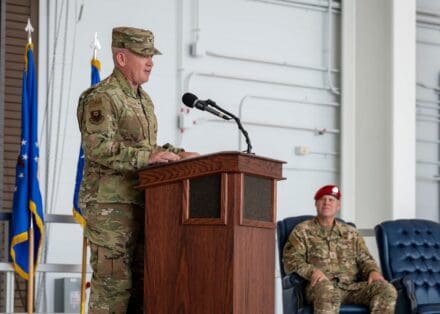
Airmen assigned to the ATF will align with the Air Force Force Generation cycle, deploying as cohesive units rather than aggregating personnel from multiple installations. The deliberate cycle fosters unit familiarity and provides clearer assessments of Air Force capacity to the joint force.
“You won’t find a better integrated group of Airmen working across mission lines, united by a shared vision and forged through incredible community support,” said Dvorak.
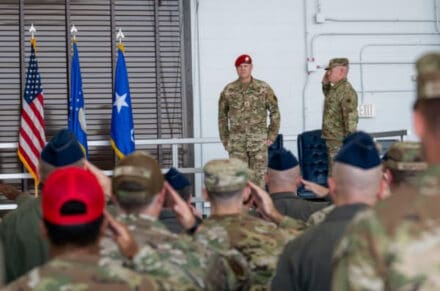
The stand-up of the 31st ATF reflects a service-wide effort to build teams capable of delivering integrated capabilities to combatant commanders while strengthening the Air Force’s long-term force design.
“In short order, we’re bringing air superiority any time, any place, anywhere,” said Dvorak. “Chief Greiner and I are so grateful to lead such a talented group of individuals.”
The Department of the Air Force has designated seven ATFs across the service as part of this force presentation initiative. ATFs mark a key stage in the Air Force’s continuing path to modernization and readiness, ensuring the service is postured to outpace emerging threats.
Story by 2nd Lt Rachel Heck | 1st Special Operations Wing

HURLBURT FIELD, Fla. —
Air Force Special Operations Command continues to champion innovation with its third annual Thunder Dome Innovation Competition scheduled this fall. Beyond the competition, the program’s success is measured by the real-world impact of its funded projects.
Every year, the competition solicits project submissions from Airmen across the AFSOC enterprise that can positively benefit readiness. Once reviewed, senior leaders select the teams with the best proposals to present in front of a judging panel. The command awards the winners with funding to develop their concepts into tangible solutions.
As we prepare for the next Thunder Dome competition, here’s a look at the progress of past winners and their ongoing projects:
From Prototype to Production: The LaraCota Comm Cord Tester
Funded through the 2024 Thunder Dome competition, the LaraCota Comm Cord Tester introduced by a member of the 27th Special Operations Wing, progressed from prototype to mass production upon additional evaluation at Cannon Air Force Base, New Mexico.
K-RATH: A Collaborative Approach to Innovation
K-RATH, developed by the 492nd SOW, received an initial Thunder Dome award for prototype development. Further funding secured collaborations with Michigan Technological University students for engineering testing and product design by Nottingham Spirk, with support from the Office of the Assistant Secretary of the Air Force for Acquisition, Technology and Logistics. The next stage for the project is further prototype development.
Enhancing Training Capabilities: The Electrical Training Board and Specialized Fueling Trainer
The 2025 Thunder Dome competition funded two projects focused on training. The 353rd SOW at Yokota Air Base received an investment to develop an Electrical Training Board, coordinating with Air Education and Training Command; while the 492nd SOW was awarded funding for a Specialized Fueling Trainer, currently under further prototype development with SOFWERX.
These featured innovations offer just a glimpse into the outcomes of the Thunder Dome competition. By empowering Air Commandos with funding, resources, and a platform to share ideas, AFSOC fosters a culture of continuous improvement with its annual Thunder Dome program.
Voting for the 2026 Thunder Dome Innovation Competition is now open and runs through September 26th. Select the best game-changing ideas to solve our toughest challenges, your vote will help determine the finalists.
Use this link to set up your DoD-Registered account and cast your three votes for the most impactful ideas. Every Air Commando voice matters!
Air Force Special Operations Command Public Affairs
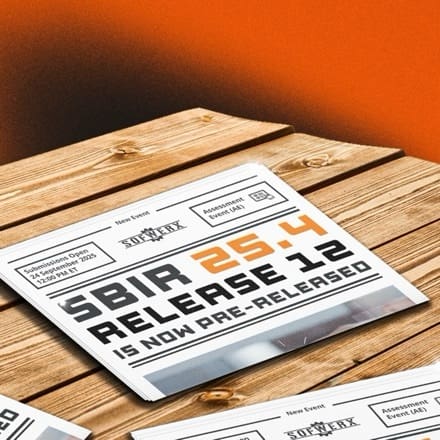
USSOCOM has announced Small Business Innovation Research (SBIR) 25.4 Release 12 ans will soon be accepting proposals.
SOCOM254-007: Acoustic-based UAS Rainbow Oscillation Refraction Architecture (AURORA)
SOCOM254-008: Silencing with Acoustic Rainbow Emitters (SWARE)
SOFWERX will host a virtual Q&A session for the areas of interest on 16 September at 12:00 PM ET.
Submissions Open 24 September 2025.
Register for the Q&A here.
MACDILL AIR FORCE BASE, Florida — U.S. Special Operations Command held a change of responsibility ceremony, Sept. 5, 2025, at the Davis Conference Center.
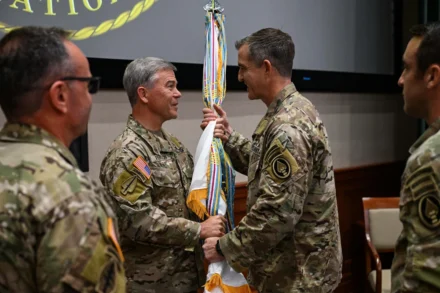
U.S. Army Command Sgt. Maj. Andrew J. “AJ” Krogman assumed responsibility as the U.S. SOCOM command senior enlisted leader from U.S. Army Command Sgt. Maj. Shane W. Shorter, who held the position for more than three years.
U.S. Army Gen. Bryan P. Fenton, commander of U.S. SOCOM, hosted the event and reflected on the importance of noncommissioned officer leadership.
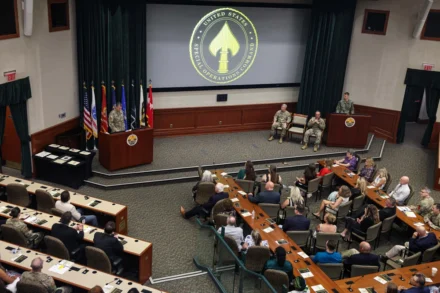
“SOF [Special Operations Forces] NCOs are the manifestation of our first SOF Truth, humans are more important than hardware – and truly – they are SOF’s credentials,” said Fenton. “And as our credentials, they lead the largest part of the SOF enterprise, our enlisted force, and set the example through their decades of service, of competence, confidence and character.”
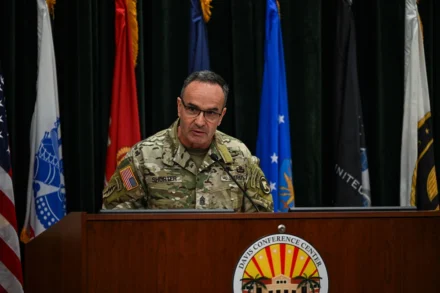
Shorter thanked senior leaders from across the joint force and international SOF allies who attended the ceremony.
“Special Operations Forces are known as pathfinders and trailblazers, but it takes courageous leaders like all of you to clear those paths,” said Shorter. “The way every senior officer in this enterprise empowers NCOs sets a gold standard not only for SOCOM but for the entire military and our partners across the globe.”
As he passed the colors, Shorter said he was confident about the future of the command.
“I can think of no one better suited to assume the responsibilities at the pinnacle of Special Operations NCO leadership, advising at the helm of a 70,000-person global enterprise, than Command Sgt. Maj. Krogman,” he said. “You exemplify the best of special operations leadership. SOCOM is incredibly fortunate to have you stepping into this vital role.”
Fenton echoed that confidence, noting Krogman’s extensive special operations experience, including his role as the Joint Special Operations Command senior enlisted leader.
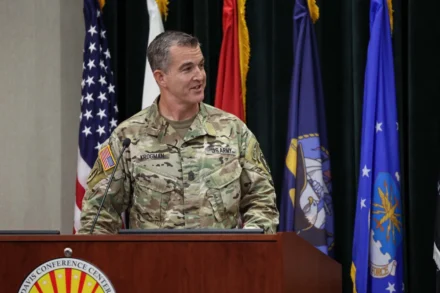
“Command Sgt. Maj. Krogman, you are known as a creator, innovator, out-of-the-box thinker, atypical and non-traditional,” said Fenton. “You are exactly what SOF needs.”
Krogman thanked Fenton for his support and described the transition as seamless and the mission ahead as urgent.
“The significance of U.S. SOCOM’s role today cannot be overstated. In an ever-changing global landscape, the need for special operations is more critical than ever – these are America’s elite warriors at the tip of the spear, ready to respond to any challenge with precision, agility and unwavering resolve,” said Krogman. “As we look to the future, the importance of special operations will only grow, and I am honored to be part of this vital mission. I am eager to work alongside each of you, to listen, to learn, and to lead with compassion and determination.”
Story by Michael Bottoms, U.S. Special Operations Command
Photos by TSgt Marleah Miller
August 30, 2025 (Redmond, WA) – B.E. Meyers & Co., Inc., a Defense Technology Manufacturer specializing in advanced photonic solutions for military, law enforcement, consumer, and aerospace applications worldwide, is honored to be awarded the contract for the Miniature Aiming Laser – Ultra High Power (MAL-UHP) program by US Special Operations Command (USSOCOM), with a total value of over $5,000,000.
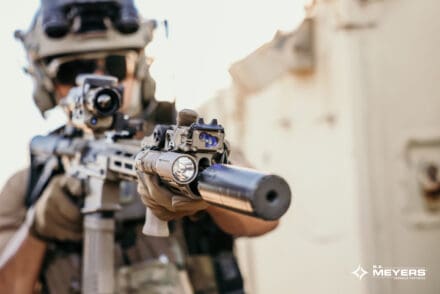
The MAL-UHP is based off of the B.E. Meyers & Co. DAGIR® Multi-Platform Advanced Laser System. The DAGIR® series of Laser Aiming Modules (LAM) is offered in two variations, DAGIR®-V1 and DAGIR®-V2. USSOCOM recently selected the DAGIR®-V1 for the Squad Aiming Laser – Ultra High Power (SAL-UHP) program in fall 2024. The MAL-UHP implements the DAGIR®-V2, which shares the same features and specifications as the SAL-UHP but with an added button for visible laser override. This allows for immediate use of the visible laser without needing to switch modes.

The DAGIR® Series is a multi-platform advanced laser system that combines a low-profile form factor with cutting-edge VCSEL technology to deliver fully digital control of visible and infrared aiming and illumination functions. Designed for weapon-mounted applications—from carbines to crew-served weapons and remote platforms. It features synchronized digital power and divergence control, ruggedized environmental durability, and a proprietary Wakizashi™ communications port for versatile cable integration via Unity® Tactical remotes. Developed with extensive end-user feedback and engineered for performance, reliability, and rapid adaptation to dynamic environments. The DAGIR® represents a significant evolution in combat laser systems and is proudly made in the USA.
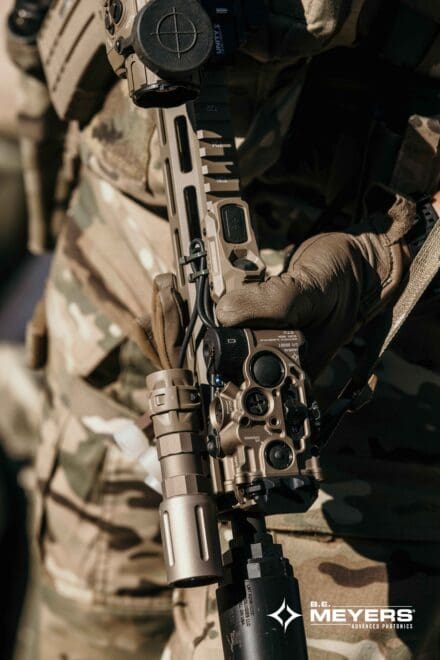
The MAL-UHP as part of the DAGIR® laser series joins a variety of other B.E. Meyers & Co. trusted product lines including the IZLID®, MAWL®, MILR®, KIJI®, GLARE®, DIAL®,and BOARS® series of defense systems products, as well as an established line of optoelectronic components for unmanned aerial vehicles and other integrated sensor systems.

For sales information on MAL-UHP, DAGIR®, and other innovative laser solutions from B.E. Meyers & Co., please visit bemeyers.com or connect with us at info@bemeyers.com
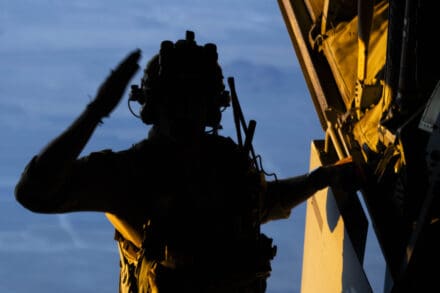
HURLBURT FIELD, Fla. —
Air Force Special Operations Command tested its warfighting readiness during Emerald Warrior 25.2, the command’s premier operational exercise held across Arizona and California from July 21 – Aug. 11, 2025.
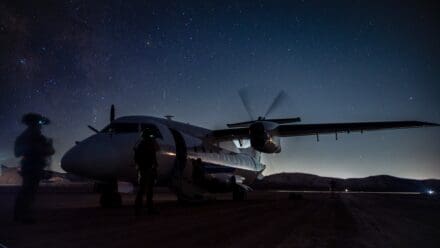
EW 25.2 was part of the first-in-a-generation Department Level Exercise series, incorporating more than 12,000 personnel and integrating various forces into joint, coalition, and multinational training. The DLE series advanced the way operations were achieved in a contested, dynamic environment to build capabilities and make a stronger, more lethal deterrent force.

“Emerald Warrior’s integration into the DLE series reinforced our critical role in preparing our forces for the scope and intensity of future operations,” said Lt. Gen. Michael Conley, AFSOC commander. “This iteration provided the opportunity to test our capabilities within a larger strategic context. The training we completed during those three weeks demonstrated the exceptional full-spectrum readiness of our Air Commandos.”
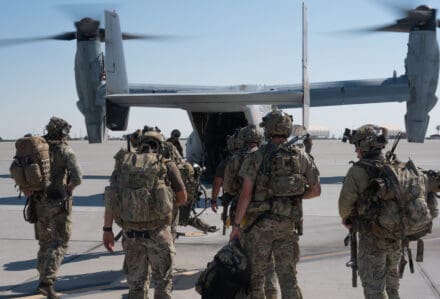
Emerald Warrior provides the venue for realistic joint, combined special operations training to prepare U.S. Special Operations Command forces, conventional enablers, partner forces, and interagency elements to respond to various threats across the spectrum of conflict.
The exercise incorporated multi-domain training designed to give Air Commandos the opportunity to find innovative solutions to tactical problems and experiment with emerging capabilities.
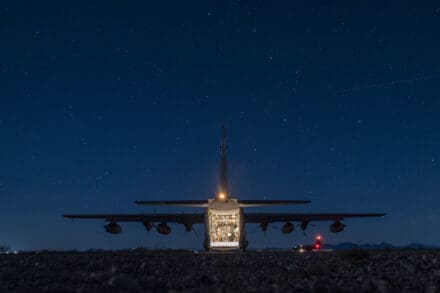
“Our goal is to match the speed and scale of large, real-world operations where command and the areas of operation are distributed,” said Conley. “Creating these dilemmas is how our teams can best learn to adapt so they can excel in future combat environments and help set conditions for the joint force to win.”
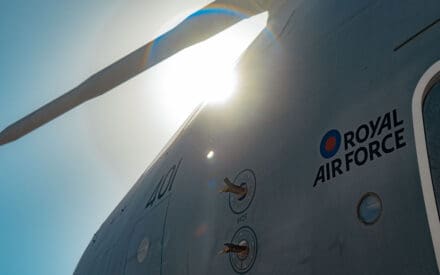
Air Commandos completed a wide range of training scenarios that validated their ability to integrate aviation, special tactics, medical and mission sustainment functions. A key objective was executing Agile Combat Employment (ACE) to demonstrate a flexible aerial advantage.
“ACE has become a requisite ability to our operations and readiness,” said Brig. Gen. Clay Freeman, AFSOC director of operations. “We must be prepared to deploy rapidly and operate from austere environments with potentially limited resources. A contested venue does not change the need to generate airpower at any place, any time, anywhere.”
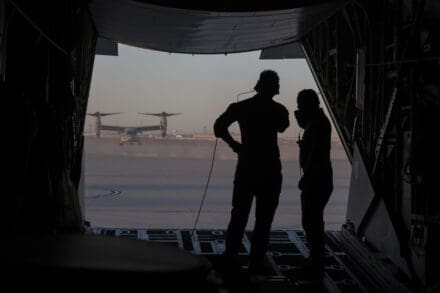
International collaboration was a key element of EW 25.2. The integration of partners in the Royal Air Force was highlighted by the RAF A400M Atlas facilitating transport and military free fall training for Special Tactics teams. Additionally, Czech Republic Special Operations Forces worked alongside special operations medical elements and surgical teams, honing collaborative abilities in humanitarian and disaster relief scenarios.
“Emerald Warrior strengthens our international relationships and interoperability”, said Freeman. “AFSOC is committed to fostering combined training opportunities with partners where we integrate our diverse skillsets and build shared capabilities to strengthen our collective security. For this iteration, we were grateful to grow our collective readiness with our RAF and Czech Republic partners.”

Along with international allies, Air Commandos trained with units from the U.S. Space Force, U.S. Marine Corps, and U.S. Army, among other interagency partners. This collaboration strengthened AFSOC’s capacity to deliver decisive effects in alignment with future force employment requirements.
EW 25.2 solidified AFSOC’s warfighting functions and underscored its commitment to adapting to succeed in today’s dynamic strategic environment.
Air Force Special Operations Command